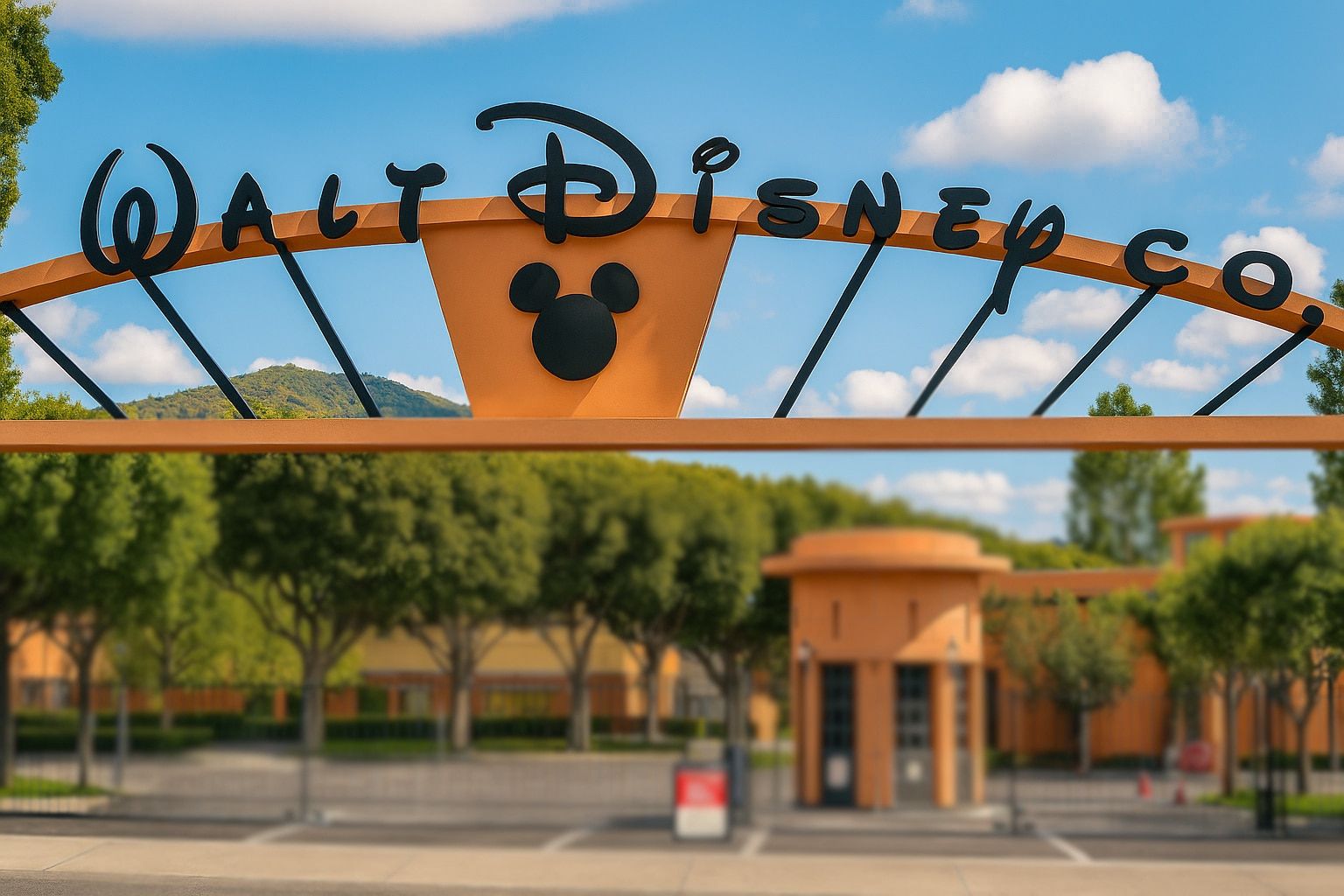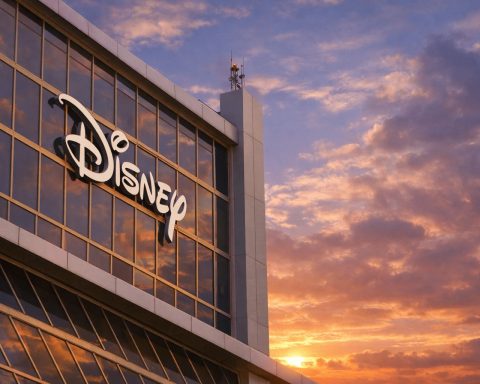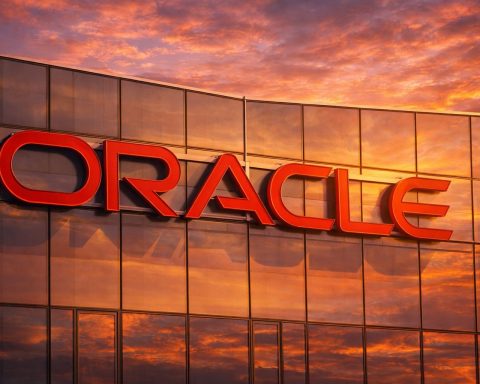The Walt Disney Company (NYSE: DIS) delivered a classic “good news, bad news” quarter this morning: revenue came in lighter than Wall Street hoped, but profits, streaming and theme parks were strong enough for the company to raise its dividend and expand share buybacks — all while navigating a politically charged Jimmy Kimmel controversy and a costly blackout on YouTube TV. [1]
Key takeaways from Disney’s fiscal Q4 2025
- Revenue essentially flat year over year at $22.46 billion, missing Street expectations of roughly $22.75–$22.86 billion. [2]
- GAAP profit jumped to about $1.31 billion ($0.73 per share) from $460 million ($0.25) a year ago. [3]
- Adjusted EPS was $1.11, down 3% year over year but ahead of the ~$1.03 consensus estimate. [4]
- The direct-to-consumer streaming unit (Disney+ and Hulu) posted operating income of $352 million, up 39%, on 8% higher revenue. [5]
- Disney+ subscribers reached 132 million, and combined Disney+ and Hulu subs hit 196 million, a net gain of about 12.4–12.5 million in the quarter. [6]
- The board approved a 50% dividend increase to $1.50 per share annually and plans to double the share repurchase program to $7 billion in fiscal 2026. [7]
- Parks and Experiences operating income rose 13% to about $1.88 billion, driven by cruise expansion and strong international parks. [8]
- Linear TV and traditional networks remain a major drag, with operating income from linear networks down about 21% and the broader entertainment division’s income falling by more than a third. [9]
Headline numbers: revenue disappoints, profit and EPS beat
For the quarter ended September 25, 2025, Disney generated $22.46 billion in revenue — basically flat versus last year but below analyst forecasts clustered around $22.75–$22.86 billion. [10]
Yet profitability improved markedly:
- Net income rose to roughly $1.31 billion, up from $460 million a year earlier.
- GAAP EPS jumped from $0.25 to $0.73.
- Adjusted EPS of $1.11 not only beat estimates but also underscored how aggressively Disney has cut costs under CEO Bob Iger’s second stint. [11]
Investors, however, focused on the top-line miss and ongoing weakness in traditional TV. Several outlets reported Disney shares slipping roughly 3–4% in premarket trading, even as the company promised double‑digit adjusted EPS growth in both fiscal 2026 and 2027. [12]
Streaming finally pulls its weight
After years of red ink, Disney’s streaming business has become a genuine earnings driver.
Direct-to-consumer turns decisively profitable
Disney’s direct‑to‑consumer (DTC) division, which includes Disney+ and Hulu, reported:
- Operating income:$352 million, up from $253 million a year earlier — a 39% increase. [13]
- Revenue: up 8% year over year, helped by price increases and growing adoption of ad‑supported tiers. [14]
On the subscriber side, the numbers were even more striking:
- Disney+ paid subscribers:132 million, up from 128 million in Q3. [15]
- Total Disney+ + Hulu subscribers:196 million, an increase of roughly 12.4–12.5 million quarter over quarter. [16]
Variety’s breakdown, based on data from research firm Antenna and Disney’s filing, suggests Disney+ added about 3.8 million subscribers and Hulu roughly 8.6 million, explaining how the aggregate net gain reached 12.4 million despite turbulence earlier in the quarter. [17]
CFO Hugh Johnston told Reuters that a new distribution deal with Charter Communications helped funnel customers toward Disney’s streaming bundle, and that the streaming debut of Disney’s latest hit — a new “Lilo & Stitch” remake — logged over 14 million views in its first five days, providing a marquee title to keep subscribers engaged. [18]
The Jimmy Kimmel controversy: from subscriber exodus to surprise surge
One of the most unusual storylines around these earnings is how late‑night politics spilled over into streaming metrics.
Suspension, backlash and a spike in cancellations
In mid‑September, ABC (owned by Disney) briefly suspended “Jimmy Kimmel Live!” after the host’s monologue criticizing political reactions to the killing of conservative activist Charlie Kirk drew fire from Trump administration officials and conservative media. [19]
The move backfired fast:
- Subscription analytics firm Antenna found that Disney+ churn jumped from about 4% to 8% in September, while Hulu’s churn doubled from roughly 5% to 10%. [20]
- One analysis estimated about 1.7 million cancellations in a single week, as viewers rage‑quit over what they saw as capitulation to political pressure. [21]
- A separate report put total cancellations related to the controversy at roughly 7 million across Disney+ and Hulu, though those figures refer to gross cancellations, not net subscriber losses. [22]
The backlash coincided with already‑scheduled price hikes for Disney+ and Hulu, muddying the waters over how much of the churn was political versus economic. [23]
Yet Q4 ends with record net additions
Here’s the twist: despite that wave of cancellations, Disney still ended the quarter with its strongest net streaming growth in a year.
AP’s reading of Disney’s numbers shows that Disney+ and Hulu combined added about 12.4 million subscriptions versus Q3, taking the total base to 196 million. [24]
Variety’s reporting suggests that alongside the protest cancellations, new sign‑ups surged as well, implying that the Kimmel saga paradoxically generated curiosity and trial even as it fueled boycotts. [25]
Disney itself nodded to the volatility only indirectly, noting that strong Q4 streaming results came “shortly after” subscription cancellations climbed in September when ABC briefly pulled “Jimmy Kimmel Live!”. [26]
The last look at Disney+ and Hulu subscriber counts
Adding more intrigue, Disney confirmed that this quarter is one of the last in which investors will see detailed subscriber figures:
- The company will stop reporting paid subscriber numbers for Disney+ and Hulu beginning in fiscal Q1 2026, arguing that metrics like revenue, profit and average revenue per user (ARPU) are more meaningful. [27]
- Disney has already stopped publishing subscriber totals for ESPN+ as of Q4 2025. [28]
That makes today’s 196 million combined Disney+ and Hulu subs an especially important benchmark — and a high‑water mark set in the immediate aftermath of the Kimmel fight.
Linear TV, box office and the YouTube TV blackout weigh on results
While streaming and parks shine, Disney’s traditional media businesses are visibly shrinking.
Linear networks: steep declines
Disney reported that:
- Revenue for the Disney Entertainment segment — which includes film studios and streaming — fell 6% year over year.
- Within that, operating income from linear networks plunged 21%, while linear revenue slipped 16%. [29]
- Reuters notes that profit at the traditional television unit, which includes ABC and cable channels, fell to about $391 million, with ESPN earnings down as well. [30]
The numbers underscore how quickly carriage fees and TV advertising are eroding as more viewers cut the cord or shift to cheaper streaming bundles.
Weaker theatrical slate
Disney’s film studio also had a tough quarter. Compared with last year, which benefited from “Deadpool & Wolverine” and lingering revenue from “Inside Out 2”, this quarter’s slate — including “The Fantastic Four: First Steps,” “The Roses” and “Freakier Friday” — generated meaningfully lower box‑office and home‑entertainment results. [31]
Reuters estimates that operating income in the broader entertainment division slumped by more than one‑third to about $691 million, reflecting both softer films and the TV downturn. [32]
YouTube TV blackout: millions lost every week
On top of those structural headwinds, Disney is still locked in a high‑stakes carriage dispute with YouTube TV, Google’s virtual pay‑TV service:
- Disney content — including ABC and ESPN — went dark on YouTube TV late last month, and negotiations are ongoing. [33]
- A Variety analysis, widely circulated via IMDB and social media, estimates the blackout is costing Disney around $4.3 million per day in lost revenue — roughly $30 million per week. [34]
That dispute doesn’t fully show up in Q4 numbers, but it looms large over the current quarter, especially as Disney leans on sports rights and live events to fuel both linear and streaming strategies.
Parks, cruises and experiences remain Disney’s profit engine
If streaming is the growth story, theme parks and experiences are still the cash cow.
Disney’s Experiences division — which includes six global theme parks, cruise lines, merchandise and games — reported:
- Operating income of about $1.88 billion, up 13% year over year. [35]
- Revenue for the segment climbed 6%, with domestic parks operating income up 9% and international parks and experiences surging 25%. [36]
Reuters points to expansion of Disney’s U.S. cruise fleet and strong performance at Disneyland Paris as key contributors to the profit jump. [37]
For investors worried about consumer spending and recession risks, the parks numbers suggest that demand for “big trip” Disney experiences remains resilient, even as moviegoing and linear TV viewing soften.
Dividend hike and bigger buybacks: Disney woos Wall Street
One clear message from today’s announcements: Disney wants to be seen as a mature cash‑return story again, not just a turnaround project.
According to Reuters and the Financial Times, Disney’s board has: [38]
- Raised the annual dividend by 50%, to $1.50 per share, up from $1.00. The company still pays semiannually, implying a $0.75 payout per installment once the new rate is in effect.
- Committed to doubling its share repurchase program to $7 billion in fiscal 2026.
Separately, the company’s official press release notes the board has also approved a quarterly cash dividend of $0.17 per share for the upcoming payout, reflecting the current ramp in its distribution schedule. [39]
For income‑focused investors, that combination of rising dividends plus stepped‑up buybacks signals confidence that Disney’s earnings power is becoming more predictable — largely thanks to streaming profitability and steady parks cash flow.
Iger’s turnaround narrative and the CEO succession question
CEO Bob Iger, who returned in late 2022 to stabilize Disney, framed 2025 as “another year of great progress” in repositioning the company for a world where traditional TV is in structural decline. He highlighted: [40]
- Cost reductions across content and corporate overhead.
- The pivot to profitable streaming, with DTC now contributing hundreds of millions in quarterly operating income.
- Continued investment in theme parks, cruise ships and franchise‑based attractions to anchor the Experiences segment.
At the same time, Disney’s board is deep into a high‑profile CEO succession search:
- The company formed a succession committee earlier and later enlisted Morgan Stanley executive chairman James Gorman to help lead the effort. [41]
- Internal contenders widely speculated in trade press include ESPN chair Jimmy Pitaro, parks chief Josh D’Amaro, and Disney Entertainment co‑chairs Dana Walden and Alan Bergman. [42]
- Iger’s current contract runs through the end of 2026, and Disney has said it expects to name a successor sometime next year. [43]
That timeline dovetails with the company’s guidance for double‑digit EPS growth in fiscal 2026 and 2027, setting up a scenario where an incoming CEO could inherit a business that’s already structurally rebalanced toward streaming and experiences. [44]
What investors and industry watchers should watch next
Looking beyond today’s headline numbers, several storylines will shape how Disney trades — and how its media strategy evolves:
- YouTube TV resolution
- How long will the blackout last, and at what economics will Disney’s channels return? The dispute affects not only near‑term revenue but also the long‑term balance of power between tech platforms and legacy programmers. [45]
- Streaming pricing and bundling
- After recent price hikes and the Kimmel‑era volatility, Disney must prove it can raise ARPU without triggering sustained churn, especially as it leans more heavily on ad‑supported tiers and bundles with ESPN and third‑party services. [46]
- Content slate and film recovery
- With this year’s Marvel and live‑action remakes underperforming, all eyes will be on Disney’s 2026 slate to see if franchises like “Star Wars,” “Frozen” or fresh Pixar titles can restore theatrical profitability. [47]
- Political risk and talent relations
- The Jimmy Kimmel saga highlights how quickly political flashpoints can morph into subscription swings, protests and boycotts. Disney will need to manage creative freedom, government pressure and audience expectations more carefully than ever. [48]
- Succession clarity
- A clear, credible CEO succession plan — coupled with continued execution on EPS growth and cash returns — could reduce the “Iger key‑man risk” discount that some analysts still apply to Disney stock. [49]
For now, Disney’s Q4 2025 tells a nuanced story: linear TV and Hollywood blockbusters are no longer the company’s center of gravity, but streaming and parks have stepped up strongly enough to fund richer shareholder payouts and a confident multi‑year earnings outlook — even in the middle of culture‑war controversies and carriage battles.
References
1. apnews.com, 2. apnews.com, 3. apnews.com, 4. apnews.com, 5. apnews.com, 6. apnews.com, 7. kfgo.com, 8. apnews.com, 9. apnews.com, 10. apnews.com, 11. apnews.com, 12. kfgo.com, 13. apnews.com, 14. apnews.com, 15. apnews.com, 16. apnews.com, 17. variety.com, 18. kfgo.com, 19. en.wikipedia.org, 20. www.thewrap.com, 21. www.cinemablend.com, 22. finance.yahoo.com, 23. deadline.com, 24. apnews.com, 25. www.cinemablend.com, 26. apnews.com, 27. apnews.com, 28. apnews.com, 29. apnews.com, 30. kfgo.com, 31. apnews.com, 32. kfgo.com, 33. apnews.com, 34. www.imdb.com, 35. apnews.com, 36. apnews.com, 37. kfgo.com, 38. kfgo.com, 39. www.barchart.com, 40. kfgo.com, 41. apnews.com, 42. apnews.com, 43. apnews.com, 44. kfgo.com, 45. apnews.com, 46. decider.com, 47. www.latimes.com, 48. en.wikipedia.org, 49. apnews.com










